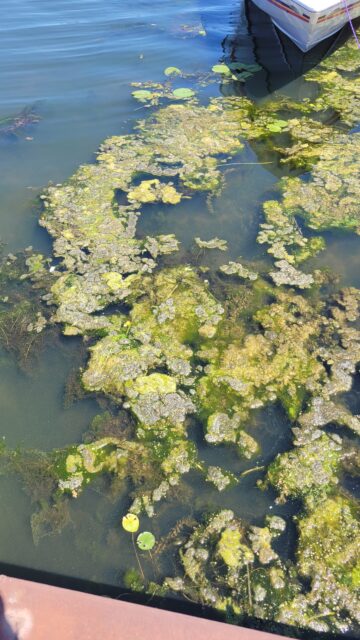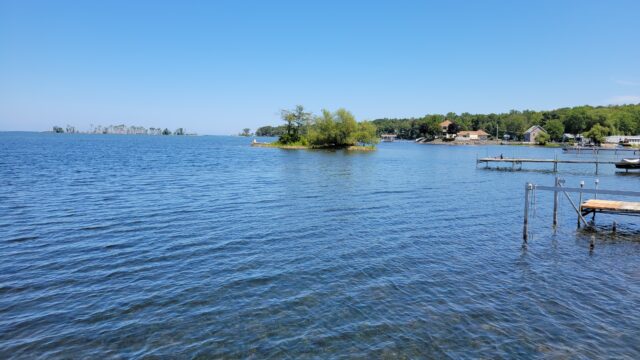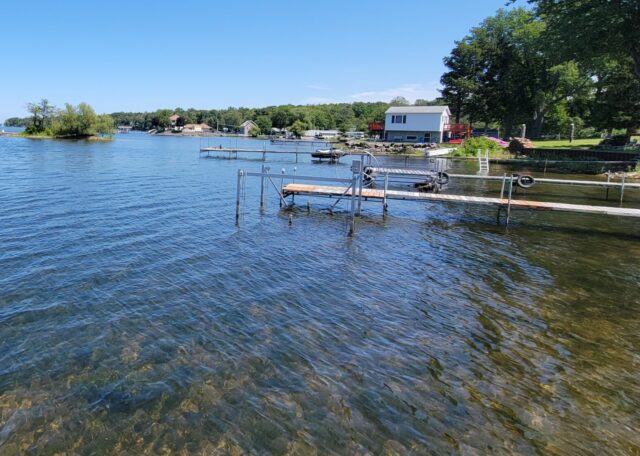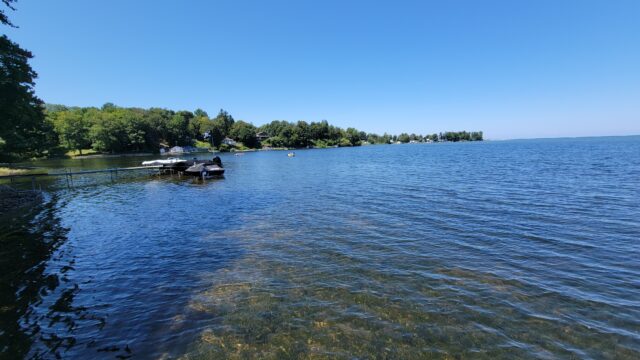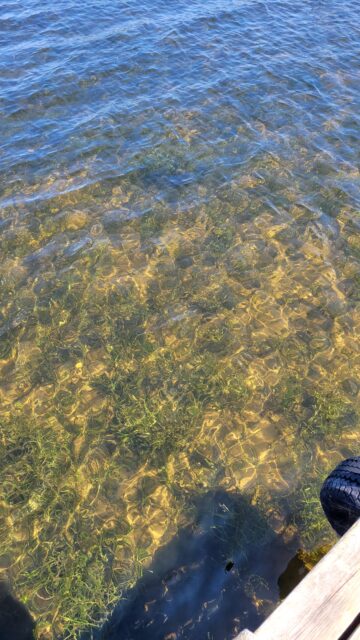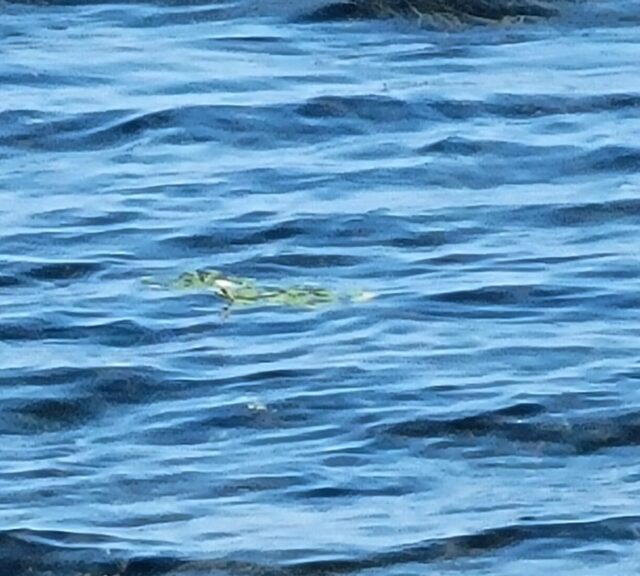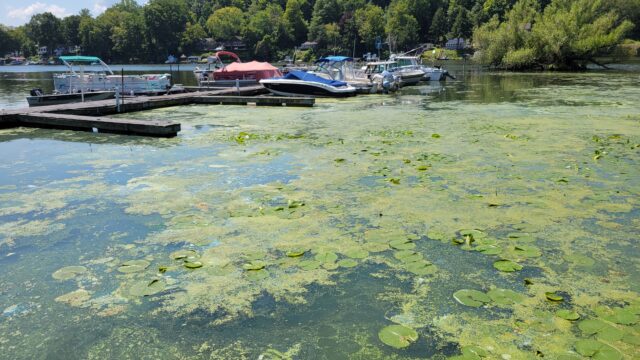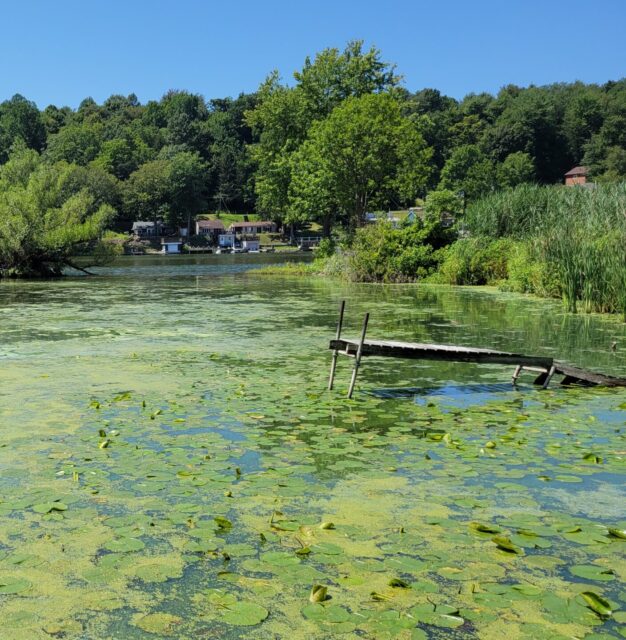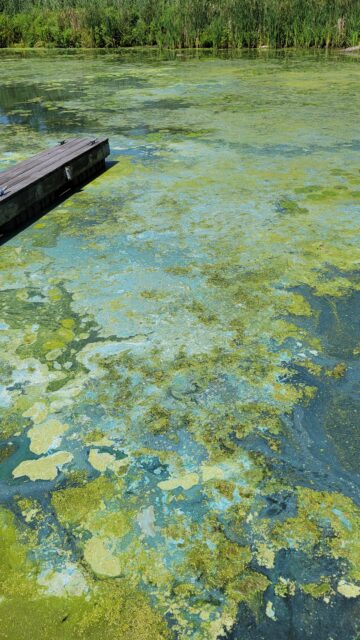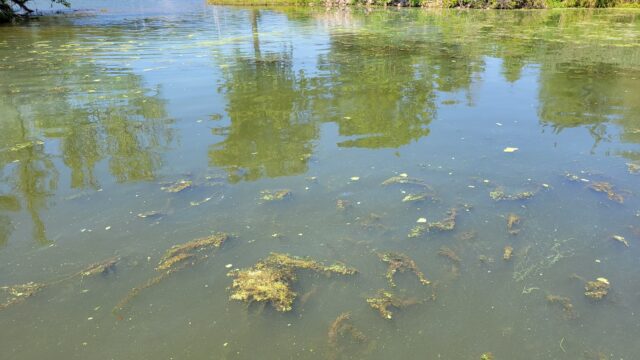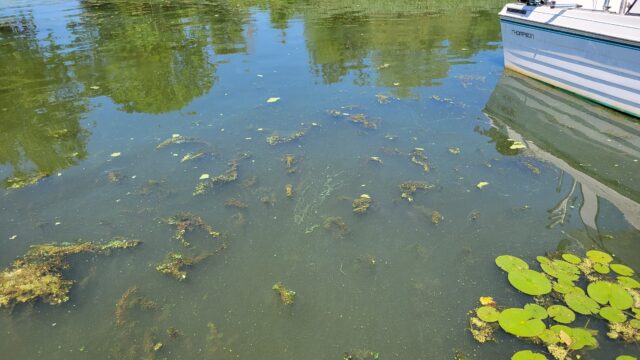Blind Sodus Bay is currently in a clear state in the south half of the bay. There is low planktonic algae biomass and sediment that isn’t being disturbed by wind and waves. The southern shallows of the bay are dominated by Flat-stem pondweed (Potamogeton zosteriformis) with some sparse Eel grass (Vallisneria americana) also present. The high rooted plant biomass is most likely attributed to clear water and less algae.
Port Bay is currently in a turbid state throughout the bay. The water has a green hue and visibility is less than 1.5 feet. There’s some sparse milfoil visible growing up to the surface. The sheltered coves have an accumulation of duckweed and filamentous algae on the surface and dense concentrations of aquatic plants. The algae may be limiting the amount (biomass) of rooted aquatic plants underneath it in certain areas. The large biomass of planktonic algae may be a result of continuous nutrient recycling in relation to the depth of the bay and the ability of wind to cause mixing. There is an isolated Blue-green algae bloom occurring in the marina of the Port Bay RV and Campground. People in this area should limit possible exposure to themselves and pets.
Sodus Bay is in a semi-turbid state. With a flush of organic material-rich tributary water from the watershed a few weeks ago and the bay possibly thermal stratifying, there is an abundance of food (nutrients) in the water column.
Thermal Stratification – the trend of impoundments to form separate and distinct thermal layers during warm weather. There are usually three distinct layers:
-
-
-
- Epilimnion comprising the top warm layer,
- Metalimnion (or thermocline): the middle layer, which may change depth throughout the day, and
- Hypolimnion colder layer extending to the floor of the waterbody.
-
-
The hypolimnion can become depleted of dissolved oxygen in summer because of the biological oxygen demand of bacterial decomposers, reduced photosynthetic activity, and the minimal mixing with upper layers. Anoxia, or absence of oxygen, in the bay’s sediment, has been strongly correlated with internal phosphorus loading to the water column. The soluble phosphorus released is readily available for uptake by algae.
NYS DEC Reminder: Report Observations of Cladophora Along NY’s Great Lakes Shorelines
Please let the NYSDEC know if you see the filamentous algae, Cladophora, by using the online observation form. Thank you in advance for helping us understand where, when, and the extent to which Cladophora is accumulating along our Great Lakes shorelines. Email GLCladophora@dec.ny.gov if you have any questions.
NYS DEC How to report a Suspected Algal Bloom? (Click here)


